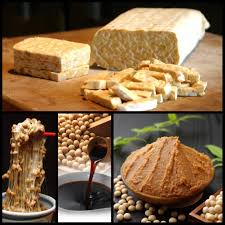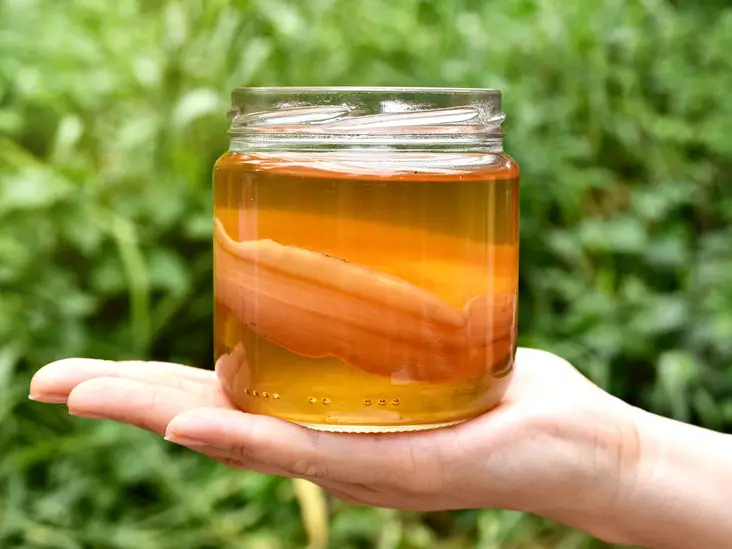Since the onset of the COVID-19 pandemic, “immune system” has been a buzzword around us! Recovery from this disease in most cases has largely been reliant on the human body’s natural defence, the immune system. A whopping 70% of our immune system activity is located in our gut. Bacteria in the intestine may help regulate immune cell activity, which allows probiotics to be potentially helpful for supporting immune function. Clinical evidence shows that certain probiotic strains help to prevent bacterial and viral infections, including gastroenteritis, sepsis, and respiratory tract infections.
What are probiotics ?
Probiotics are “live microorganisms when administered in adequate amounts confer a health benefit on the host.” The concept of probiotic bacteria is very old, and is associated with the consumption of fermented foods by human beings, for thousands of years. Recently, new types of food products containing probiotic bacteria have started to be introduced into the market, including non-dairy products, such as chocolate, cereals, beverages, fruits and vegetables products. In the near future, a wide range of non-traditional food products containing probiotic bacteria are expected to be introduced into the market.

How Probiotics Act ?
As mentioned in an earlier blog article, probiotics have various mechanisms of action. Probiotic microorganisms can be elucidated by promotion of digestion and uptake of dietary nutrients, strengthening of intestinal barrier function, modulation of the innate and acquired immune response of the host, production of antimicrobial substances and competition with pathogens for binding sites. In addition probiotics show adhesion and colonization of the different sites of the human body which may increase their retention time thus providing prolonged probiotic activity.
Probiotics produce substances that inhibit pathogens – low-molecular weight substances – bacteriocins, antibiotics and microcins. Lactic acid bacteria produce a variety of substances that exhibit antagonistic activity against other bacteria.
Various Probiotic Products
Dairy probiotic products :-
Milk is an excellent medium to carry or generate live and active probiotics through various cultured dairy products. The buffering capacity of milk helps to improve the survival of probiotic flora in the GI tract. Currently hundreds of probiotic dairy products are manufactured and consumed around the world, examples are as follows.

Yoghurt – About 80% of the population use yoghurt for direct consumption or as a food supplement daily. A characteristic feature of this product is the addition of starters of pure cultures of Streptococcus thermophilus and Lactobacillus delbrueckii ssp. Bulgaricus for conducting lactic acid fermentation. These traditional lactic acid bacteria have a positive effect on the body, which is a result of the formed metabolites, which inhibit the putrefactive and pathogenic flora or of the improvement of the utilization of lactose. In last decade many new flavours have been incorporated in yoghurts in order to attract consumers.
Ice cream – The incorporation of probiotic cultures into ice cream results in adding value to the ice cream product and it being considered as a functional product. The ice cream composition, which includes milk, incorporating proteins, fat and lactose, as well as other compounds, make ice cream a good vehicle for probiotic cultures. During probiotic ice cream development, the ultimate aim of processes optimization is to enhance and maintain the probiotic survivability, ice cream being relatively high in pH at values of 5.5 to 6.5 leads to an increased survival of the probiotic bacteria upon storage.
Cheese – Cheese provides a valuable alternative as a food vehicle for probiotic delivery. Its high protein content provides probiotic bacteria with a good buffering protection against the high acidic condition in the gastrointestinal tract, and thus enhances probiotic bacterial survival throughout gastric transit. Cheddar cheese is a good carrier to deliver Enterococcus faecium into the gastrointestinal tract of humans.
Kefir – Kefir is a traditional popular beverage consumed for thousands of years in the Central Asia and Middle East countries. It is an acidic-alcoholic fermented milk product, with uniform creamy consistency and a slight sour taste. Milk is fermented with kefir grains, it usually contain lactose-fermenting yeasts Kluyveromyces lactis, K. marxianus and Torula kefir. Lactobacillus, Lactococcus, and Leuconostoc; acetic acid bacteria and a further yeast mixture are typical inclusions. Kefir is rich in vitamins B1, B12, folic acid, vitamin K, and biotin, as well as calcium, magnesium, and phosphorus.
Non-dairy probiotic products
Dairy products are the main food carriers for probiotic bacteria to human. Limitations of these products such as the presence of allergens, high lactose and cholesterol contents, and the requirement for cold storage facilities have created the need to look for new probiotic product lines based on non-dairy substrates. Several ranges of non-dairy probiotic products have been developed and marketed in the last two decades.
Chocolate – The application of probiotic bacteria into chocolate could offer a good alternative to common dairy products, and allow for broadening the health claims of chocolate-based food products. A chocolate mousse was developed by using probiotic and prebiotic ingredients with L. paracasei subspecies and with the prebiotic ingredient inulin.
Soy based products – Soybeans are typically high in phytic acid, a plant compound that impairs the absorption of minerals like iron and zinc. Fermentation lowers the amount of phytic acid, which may increase the amount of minerals your body is able to absorb from tempeh and other products. It includes the following products:-

Miso – It is made by mixing soybeans with other ingredients, such as barley, rice and rye. Miso is a good source of protein, fiber and various vitamins, minerals and plant compounds, including vitamin K, manganese and copper.
Natto – Natto is a fermented soy product that is a staple in Japanese kitchens. It contains a high amount of vitamin K2, which may help prevent osteoporosis and heart attacks.
Tempeh – Tempeh serves as a popular, high-protein substitute for meat. It contains a decent amount of vitamin B12, a nutrient found mainly in animal products.
Kombucha – It’s made by adding specific strains of bacteria, yeast and sugar to black or green tea, then allowing it to ferment for a week or more. Kombucha is rich in tea polyphenols and acetic acid, which have both been shown to suppress the growth of undesirable bacteria and yeasts as well as helped prevent the growth and spread of cancerous cells. In the market Kombucha is now available in several fruit flavours.

Sourdough Bread – It is an old popular bread which has recently risen to popularity! A recent study showed the market value of sourdough increased from $298.7 million in 2014 to $2.4 billion in 2018. Sourdough bread may not seem that different from regular bread, however the fermentation process breaks down some of the gluten, and that makes it more digestible, especially for people who struggle to digest gluten. It helps to keep your gut bacteria happy, and may be less likely to spike blood sugar levels.





Very Nice Information …
Thanks Amolika for sharing with us
It’ll really helpful in these pandemic situation
Eagerly waiting for upcoming blogs
Keep it up…👍
Thanks Shubhangi for your encouraging words.
Thanks Amolika ,for sharing this useful information with us in this covid -19 pandemic situation.
👍All the best …!!
Thanks Amruta, stay tuned to read more interesting articles !
Nice Information.
Thank you for reading !
Wow..was very informative! I learned some new things about foods I have been consuming all my life. Thanks for sharing your knowledge Amolika 🙂
I am glad you found it informative. Thank you Kirti.
Right amount of information explained in right manner..!
Good going..✌️
Thank you samiksha for valuable feedback !
Thank you so much for this informative blogpost. I’ve been consuming most of these foods, without even knowing their benefits. Looking forward to seeing more such blog posts 🙂
So happy to read this blog by you! Very well described.. Keep blogging and updating us😃
Good information, put together for everyone . We done Amolika 👍👍
Nice sharing.